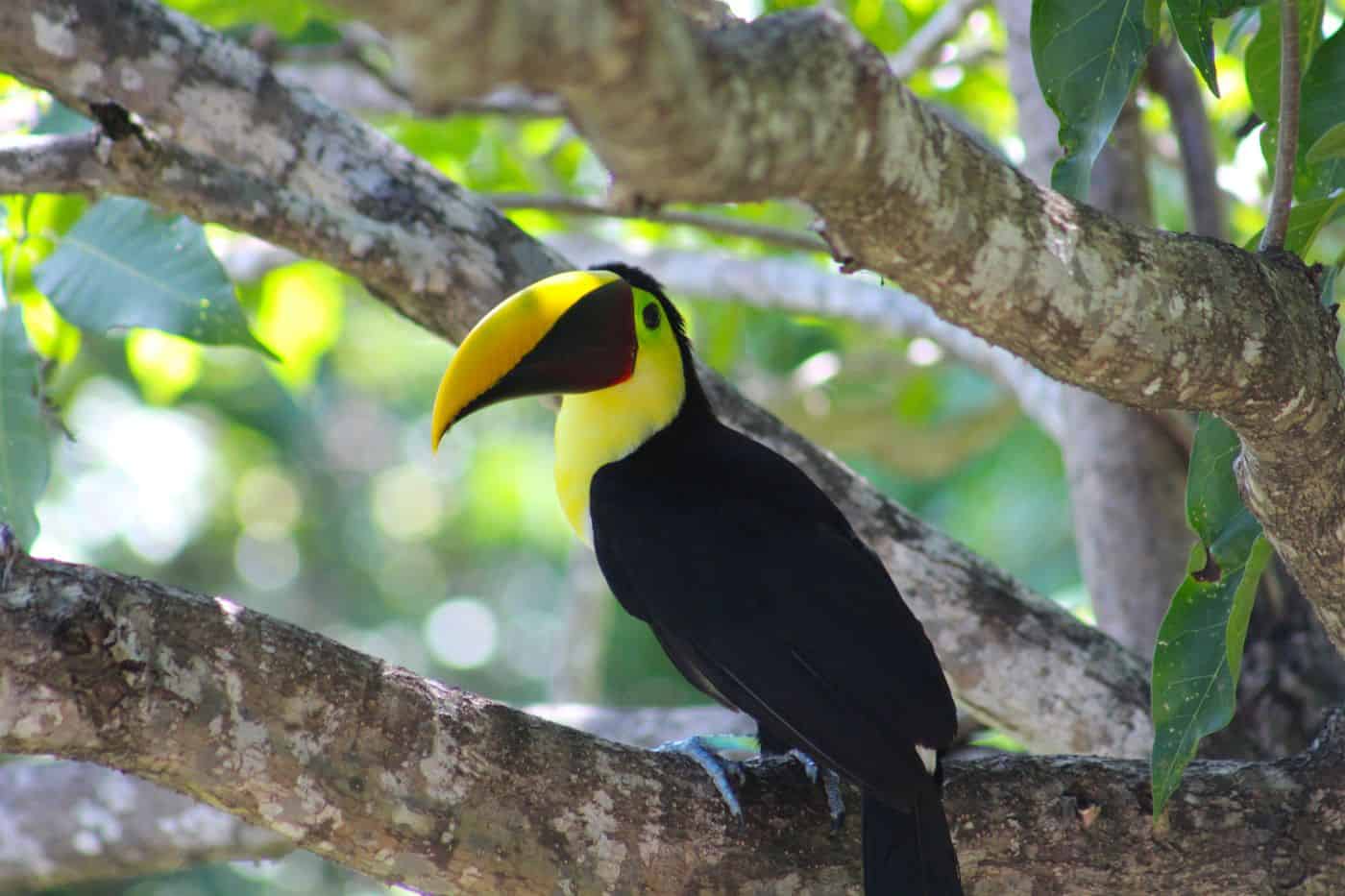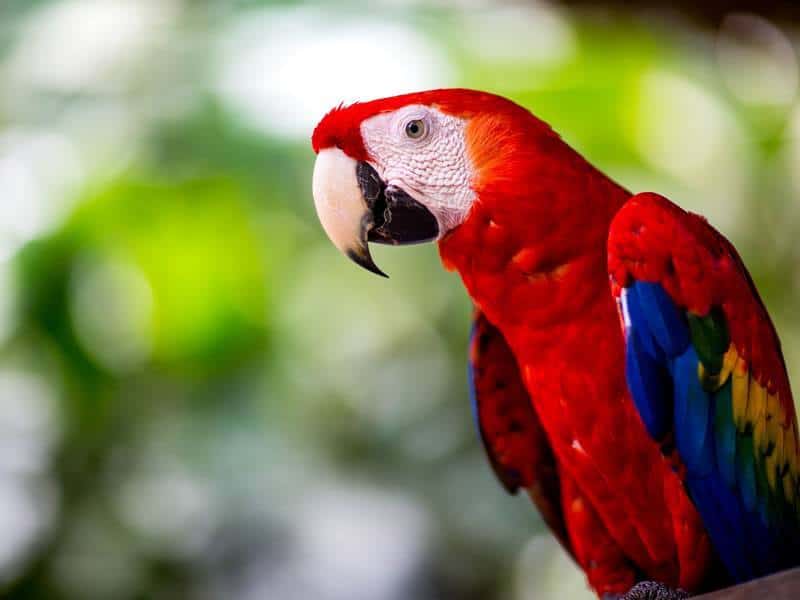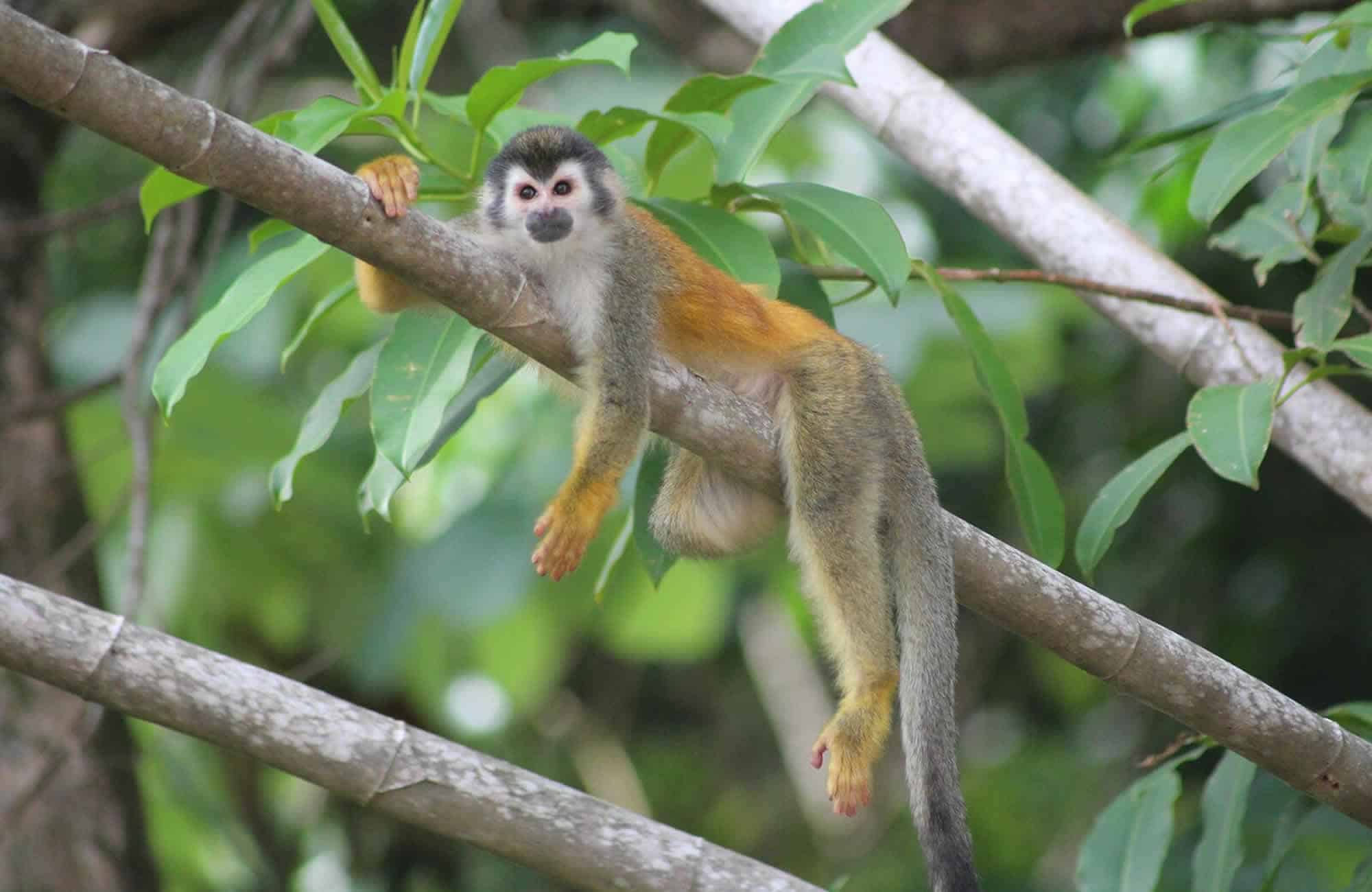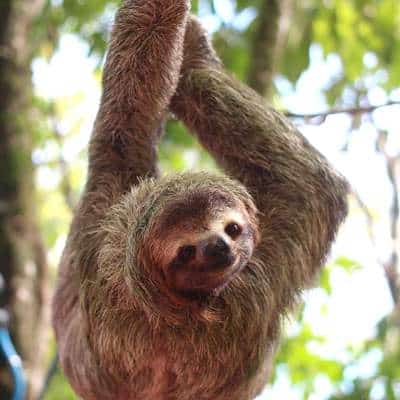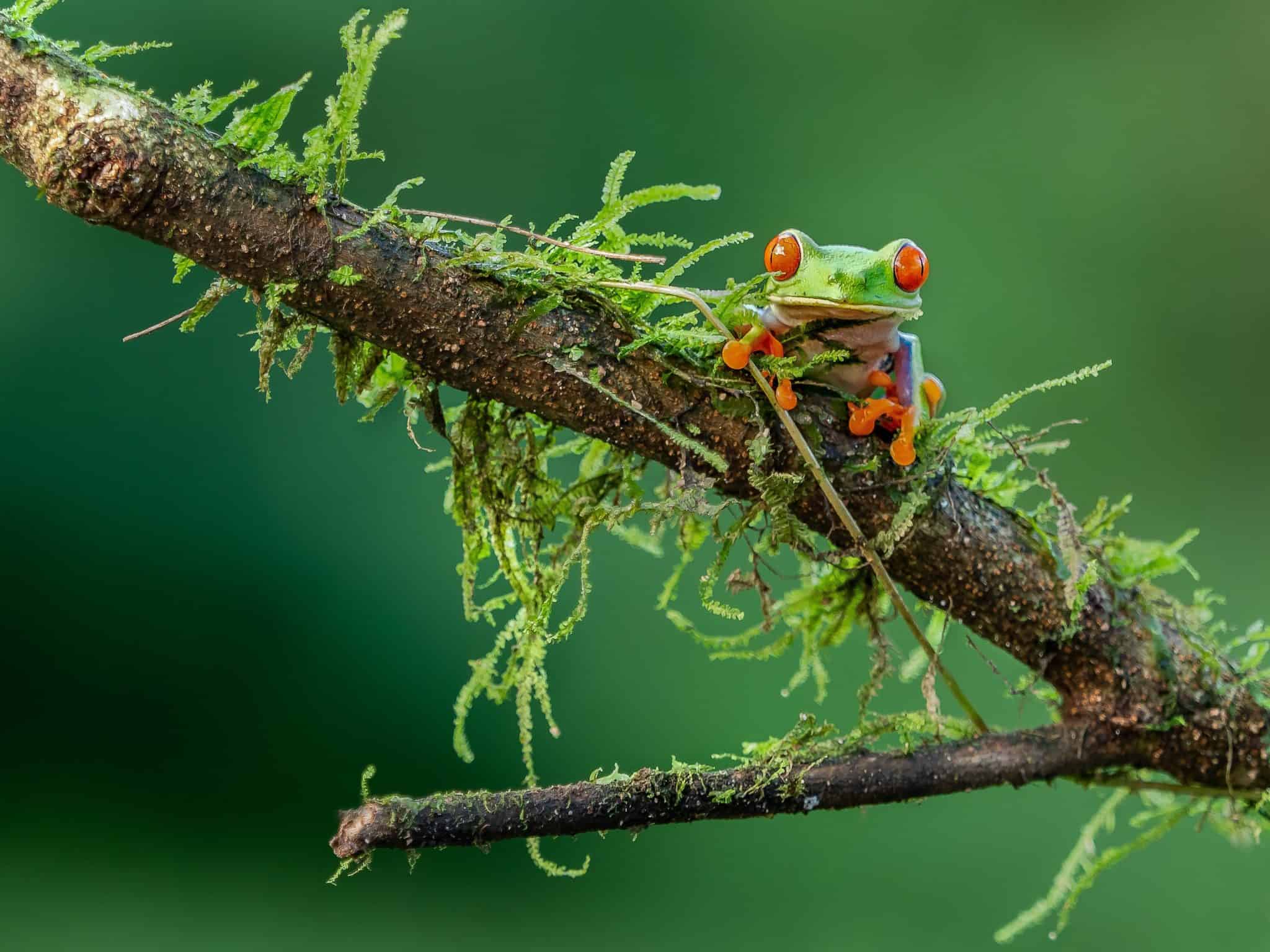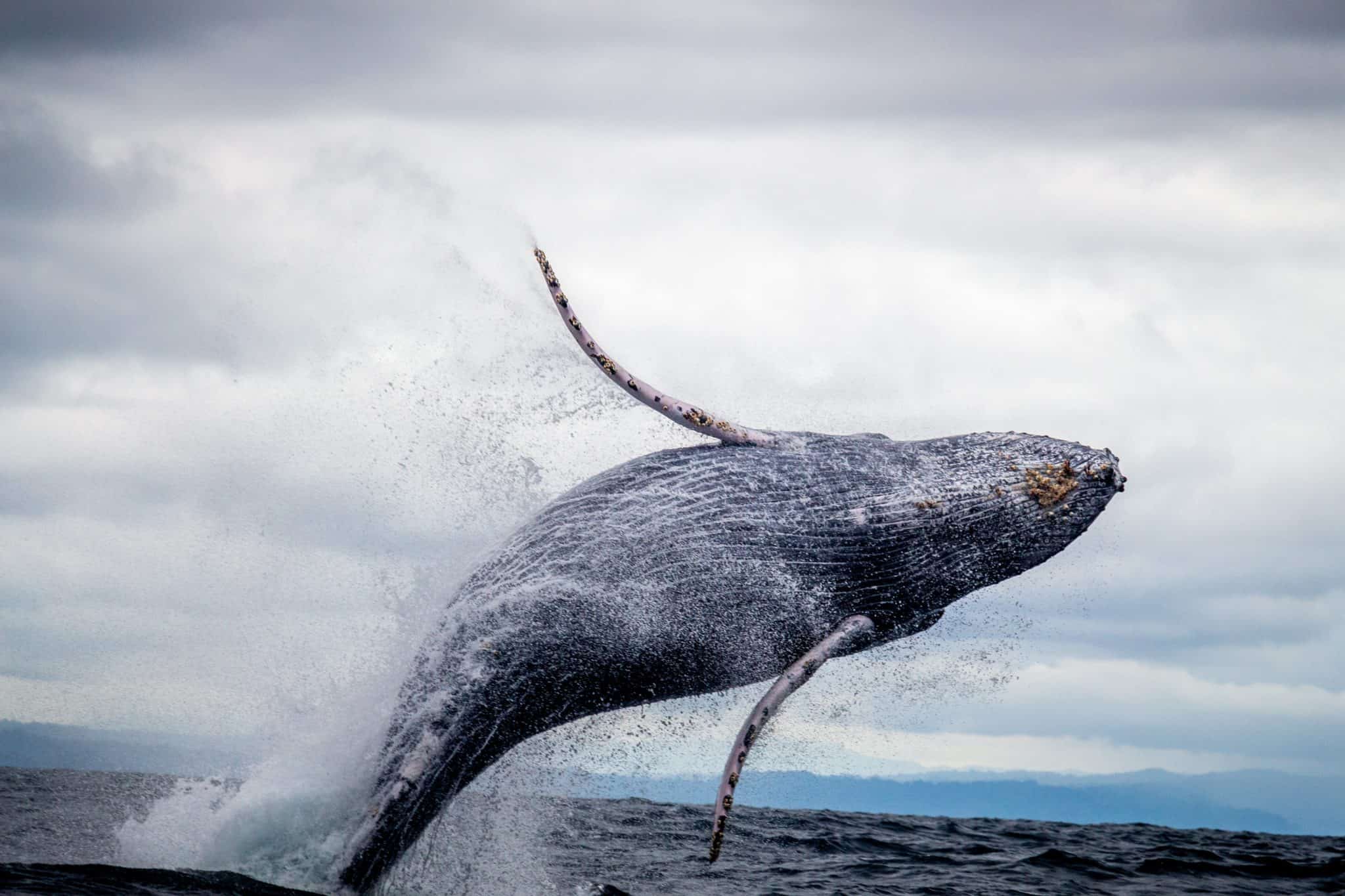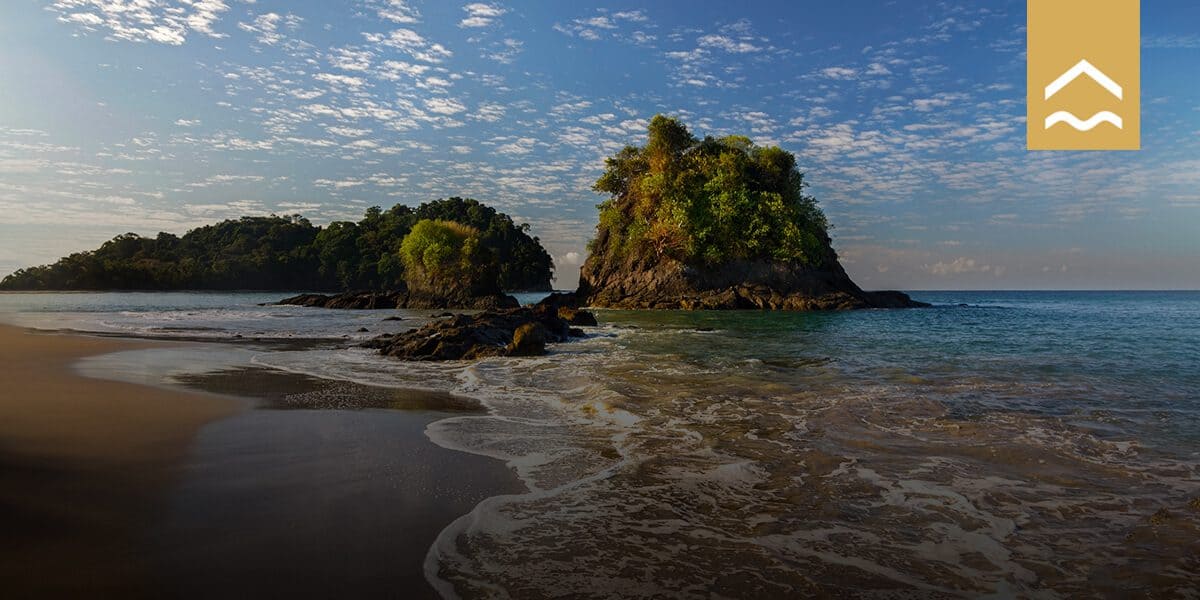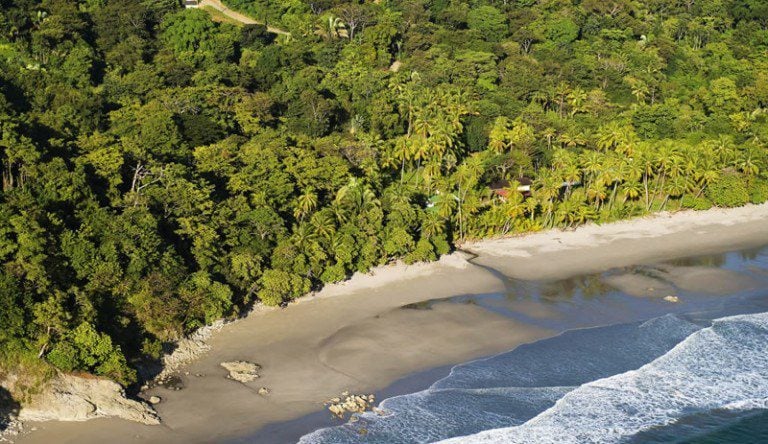What Types of Wildlife Can I Expect to See on My Costa Rican Vacation?
Costa Rica is a paradise for outdoor adventurers, and it’s a nature lover’s dream. The Villa Punto de Vista Estate is surrounded by the magic of the rainforest and the ocean and is a phenomenal retreat for bird watchers and wildlife enthusiasts.
Villa Punto de Vista and Villa la Isla are nestled in a private 2.5-acre reserve, bursting with biodiversity and exotic wildlife. You can find everything from slow-moving sloths and bright-eyed tree frogs to the loudest mammal on Earth and one of the largest. The best part? You don’t have to drive hours into the wilderness to see them. Most of these animals can be admired from the comfort of your private balcony on the Villa Punto de Vista Estate.
While you can find many animals at the estate, the villas are right next to Manuel Antonio National Park, a tropical nature reserve that’s replete with white-sand beaches, coral reefs, lush vegetation and hundreds of animal species. Whether you venture out to the park or stay at the villas, you’ll probably cross paths with plenty of exotic species as you go about your day. Many of them are unique to this area of the central Pacific coast and can’t even be found in other parts of Costa Rica!
Let’s dig into the kinds of interactions you can expect with the animals in Costa Rica.
The Everyday Animals in Costa Rica
Punto de Vista was built with the idea of celebrating the beauty of the natural world by bringing the outside in. Nature is always within sight and within reach at this Manuel Antonio luxury villa, thanks to the open spaces, outdoor areas, floor-to-ceiling windows and frameless glass balcony railings.
Enjoy your morning mimosa as you watch the howler and squirrel monkeys playing in the trees, relax in the pool and listen to the parrots and parakeets chirping and squawking, or make use of the barbecue area as you marvel at the sloths up in the trees. Whether you’re visiting for a Costa Rican luxury wedding or family reunion, you might even get lucky enough to see the endangered white-headed capuchin monkey or one of many iguana species.
Of all the luxury retreats Costa Rica has to offer, Punto de Vista has the best of all worlds. Nestled in a thriving and diverse natural utopia, the villa has panoramic views of the Pacific ocean, unparalleled access to unforgettable beaches and hiking trails and unobstructed views of the lush jungles and coastal waters of Manuel Antonio National Park.
The Jungles, Mountains and Beaches of Manual Antonio
You’ll find plenty of animals within the Villa de Punto Vista Estate — sometimes more than you would at the nearby national park! Should you choose to venture out, the area is home to many other locations, activities and tours to help you maximize your chances of seeing the local wildlife.
Don’t let the national park’s relatively small size fool you — the Manuel Antonio National Park has about 680 hectares of land packed with biodiversity. It has over 100 mammal species and nearly 900 species of birds, many of which are rare, tropical and exotic. Plus, the Manuel Antonio National Park has some of the best beaches in the world.
The park also offers guided tours, which are great team events if you’re visiting Costa Rica on a corporate retreat, and it makes for a lovely day trip for vacationing nature nuts! The tours take you through the hiking trails, help you better understand the complex ecosystems of the rainforest and ocean, and point out the local flora and fauna. These include fascinating insects, reptiles, frogs and other animals, like the coatimundi, who is similar to a raccoon and loves to feed on the crabs that come up onto the beach.
The Animals Up Close
Below is a closer look at some of the different Costa Rica animals you can expect to see throughout your visit!
Birds
Those 900+ species of birds we mentioned include varieties such as:
- Scarlet macaws.
- Toucans and toucanets.
- Aracaris.
- Motmots and potoos.
- Tanagers.
- Hummingbirds.
- Woodpeckers.
- Hawks and turkey vultures.
- Brown pelicans.
- Kingfishers.
Scarlet macaws are one of the most well-known tropical birds. Since they travel in pairs, you could get a two-for-one deal. This is because they mate for life, which can be up to 60 years. The macaws almost went extinct in the area but have made an incredible comeback thanks to recent efforts. Now, the central Pacific coast is one of the best spots to see these talkative birds.
Toucans are another popular resident of Costa Rica. Several species of these fruit-eating birds live in the area, so you might see the keel-billed toucan with its multicolored beak or the yellow-and-red-beaked chestnut-mandibled toucan, among many others.
Many of these bird species are native to Costa Rica and abundant within the area. Grab some binoculars, because the Costa Rica wildlife can make for a stunning bird-watching experience.
Monkeys
Monkeys are one of the most beloved parts of visiting a place like Manuel Antonio. They are very sociable animals that you can find all over the country. They are more than comfortable around humans. Be sure to keep an eye on your things while at the national park as they might try to steal any food you may have and even been known to thieve a purse or backpack! Even if you’re okay with losing your snacks, it’s illegal to feed the wildlife, so keep food to yourself.
Some of the kinds of monkeys you might see include:
- White-faced capuchins. These monkeys are some of the most intelligent primates. They use tools as weapons when they hunt for food and have been seen rubbing plants on their skin like herbal remedies or bug repellant. You’ll often find them roaming the area in groups.
- Mantled howlers. Mantled howlers are the loudest Mammal in the world — their call can be heard for 5 kilometers!
- Squirrel monkeys. Squirrel monkeys are relatively small and very fast and can belong to groups of over 500 monkeys. One Costa Rican species, the red-backed squirrel monkey, is endangered. You can only find it in the Manuel Antonio and Corcovado regions of the world.
- Spider monkeys. The spider monkey is one of the largest monkeys in the area, and many species are threatened or critically endangered. To match their name, these monkeys have long, spindly limbs and tails that can grab onto branches and help them climb.
You can find many of these monkeys out and about, right at the villa and in the national park, both of which host thriving colonies. They typically travel in groups, so if you see one monkey, there are probably plenty of others not far behind.
Sloths
Sloths are a favorite to many Costa Rican guests, especially in the area of Manuel Antonio. Sloths are extremely slow but incredibly cute. They hang out in treetops most of the time and only come down about once a week. Local species include the two-toed sloth and the three-toed sloth, though you’re most likely to see the three-toed sloth, which is active during the daytime.
Be sure to keep your eyes peeled when you’re sipping your coffee or walking along the beach. They are easy to miss because of their uncanny camouflage, but you’re sure to see some hanging around relaxing or slowly walking to their next tree!
Reptiles and Amphibians
The Costa Rica fauna also includes an array of fascinating reptiles and amphibians. The most iconic, but somewhat hard to find, is the red-eyed tree frog. This frog hangs out in the treetops and tricks many predators into thinking it’s poisonous with vibrant, eye-catching colors. Another colorful frog you might see is the poison dart frog — this one actually is poisonous, but only if ingested.
Outside of frogs, you may also get to see a range of reptiles. Large iguanas are common near the villa and all around the area, and you may even see some common basilisks, also known as Jesus lizards. These lizards get their biblical name from their ability to run on water. For example, green crested basilisks can run at a top speed of 15 miles per hour on the water. Jesus lizards often do this to outrun predators from the coast.
Costa Rica is also home to large-headed anoles — one of over 400 species of anole lizards — and leaf-litter geckos.
Marine Life
Spend a day with the right captain or simply keep your eyes peeled on your villa’s panoramic ocean views between the months of August and November. You could get a spectacular view of some of the largest animals in the world, humpback whales, just a couple hundred feet from shore!
Costa Rica is famous for land animals, but it should be famous for its whales. The area has an incredibly long whale-watching season, with whales present almost year-round. The breeding seasons of different humpback whale species coincide in the area. When one migrates away for the season, another species comes to visit.
They travel from both extremes of the earth, from North and South America, and travel up to an astonishing 5,000 miles to the warm waters near Costa Rica to congregate, find partners and rear their young. They have the longest migration of any mammal in the world! Humpback whales are also known for lots of surface-level behaviors like surface spy hopping and fin slapping, making them very fun to observe.
Other whales you might see on the Pacific Coast include killer whales, false killer whales and Bryde’s whales. Large pods of Bottlenose dolphins are another exhilarating sight when on the water, as they leap and splash around on the water’s surface. Dolphins are another incredibly smart animal residing in Costa Rica. Some of the intelligent activities they do include using tools, recognizing themselves and mimicking other animals.
Back on the shore, you’re likely to find a wide range of colorful, skittering crabs. If you take a scuba diving trip, you might get to see a leatherback or hawksbill sea turtle. Hawksbill sea turtles are somewhat on the smaller side and critically endangered, thanks to the beautiful pattern on their shells. They feed almost exclusively on sea sponges, which both protect coral reefs and make the turtles’ flesh toxic to humans.
Butterflies
The Costa Rican wildlife includes some truly gorgeous butterflies, like the giant blue morpho butterfly. This recognizable, electric blue species is just one of 1,500 types of butterflies in Costa Rica. Its wingspan of up to 8 inches makes it one of the largest butterflies in the world. The underside of these massive wings is a dull brown, which contrasts with the iridescent blue when the butterflies fly to create the effect that they are vanishing and reappearing over and over.
Other exciting insects you might come across include the variable cracker butterfly, a mottled brown and white butterfly that makes a loud cracking noise when it takes flight. You may see the white-spotted glasswing butterfly, which has beautifully translucent panels in its wings. That’s not including the many, many species of moths you can find in the area, too!
Check out one of the many nearby butterfly gardens to see breathtaking numbers of them in one place.
Big Cats
You’d be one of a very lucky few if you saw a big cat in Costa Rica. These cats include pumas, jaguars, margays and ocelots, but they typically keep to themselves far away from tourists.
Margays and ocelots are both small, spotted cats that look very similar. However, margays have the upper hand in the treetops — they’re much better climbers. Pumas also go by the term mountain lion or cougar and are very large cats that live in many parts of the Western Hemisphere. As for jaguars, they are one of the largest cats in the world, second only to lions and tigers.
All of these cats are beautiful animals, but most are nocturnal, and many live in the mountainous areas of the country. This makes them particularly difficult to see.
Experiencing the Costa Rica Wildlife
This list is far from exhaustive, especially considering there are over 500,000 species of animals in Costa Rica. From sociable monkeys and beautiful butterflies to the national animal of the white-tailed deer, the Costa Rica fauna is incredibly varied. Between the biodiversity of the Villa Punto de Vista Estate’s on-site reserve, Manual Antonio National Park and other opportunities throughout the area, a trip to Costa Rica is the ideal place for any wildlife lover!
At the Villa Punto de Vista Estate, we offer assistance from seasoned staff, who can point out the many animals you can find on our 2.5-acre private reserve or help cultivate ideal opportunities for seeing the many animals nearby. We can even help arrange transportation and recommend tours and the best places to spot the Costa Rican wildlife you’re after.
With over 25% of the national territory being protected lands, Costa Rica is truly an awesome bio-dense location to experience the best flora and fauna. Although it covers a minuscule .03% of the world’s surface, it holds 5% of the world’s biodiversity — an unforgettable experience for children or animal lovers!
For more detailed information on a spectacular stay at Villa Punto de Vista or Villa La Isla with all it’s Costa Rican wildlife, contact us online or call 888-890-8687.

